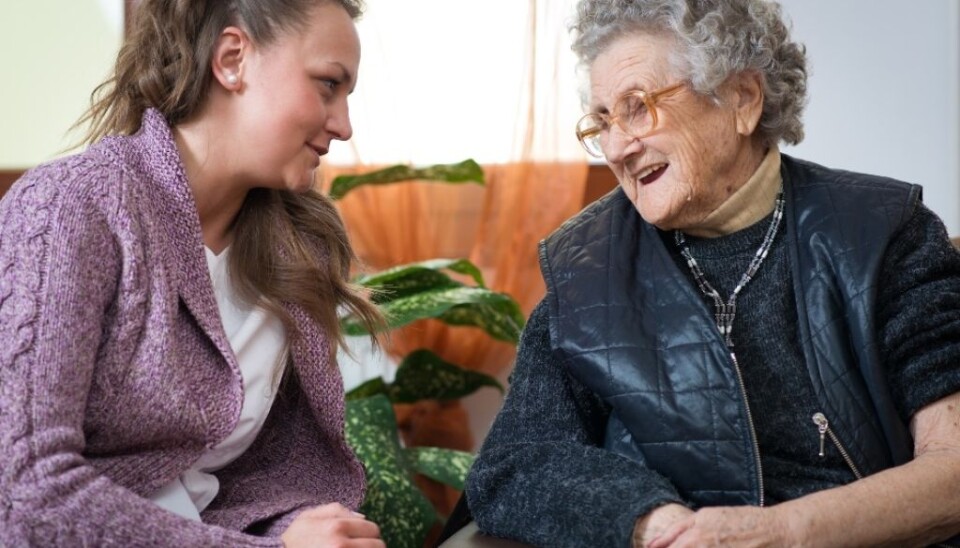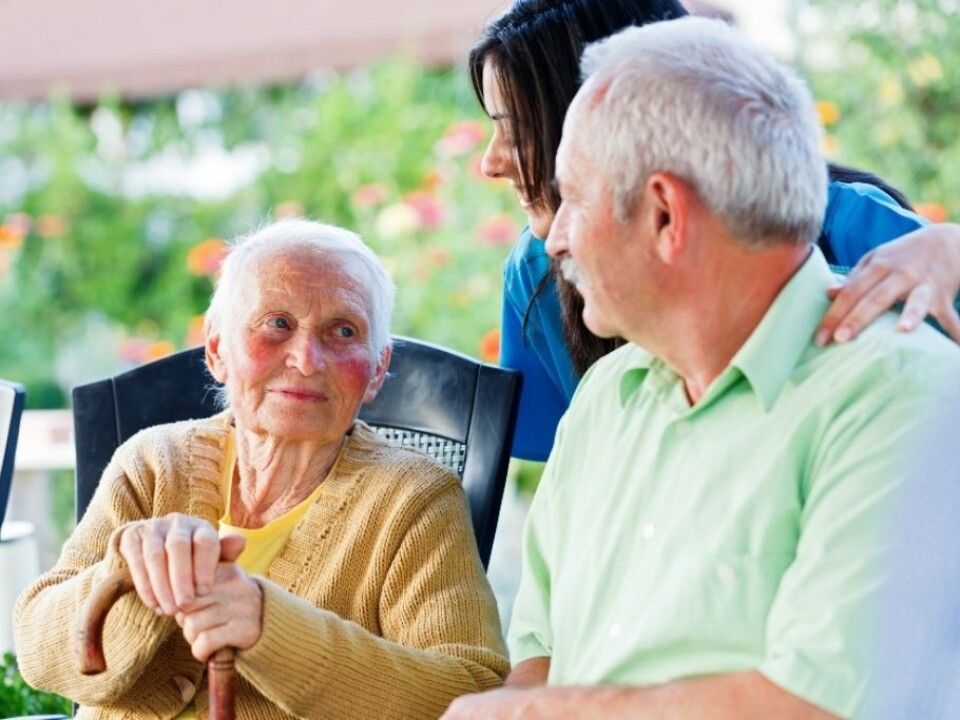
Elderly treated by 17 different aides on average per 28 days
Elderly Norwegians who live at home and receive assistance from district nurses and nursing aides have to cope with far more individual helpers than recommended. But the patients rarely complain.
Denne artikkelen er over ti år gammel og kan inneholde utdatert informasjon.
A mounting number of elderly Norwegians continue to reside at home even if they are infirm, feeble and in need of lots of care.
This means that many of the district nurses and aides have to do their jobs in homes scattered around a community, driving from place to place. This requires lots of staff to working on shifts seven days a week.
For supervisors entrusted with scheduling the rotation of staff and filling in the gaps, make-do solutions usually pre-empt the goal of building up personal relationships between helpers and the patients, a continuity in care.
“It is deemed clinically beneficial to have only a few aides to deal with. These assistants will thus get to know the patients well and will notice small changes that occur as time passes,” says Edith Gjevjon.

She has worded in the municipal services for such home-based care for years and recently completed a PhD study that is the first in Norway to register how many different individuals patients have to cope with when in need of daily health assistance in their homes.
Gjevjon got her information from 79 patients and conducted interviews with patients, their families and managers of such services in 12 Norwegian municipalities.
Up to 35 different aides per patient
It turns out that it is nearly impossible to ensure continuity in health personnel on a 24/7 basis, involving day, evening and night shifts.
Legislation and contracts related to working hours, work environment, copious use of part-time workers and budgetary considerations usually take priority when supervisors in the health care sector try to keep things running smoothly.

“The managers in the study expressed a wish to reduce the number of nurses and nurse aides per recipient of help, as they are very aware that this is supposed to be beneficial to the patients. But they have to make choices and sacrifices. Efforts to ensure continuity often have to play second fiddle. They are not happy about it, because they have their professional ideals,” says Gjevjon.
In her study she discovered that an average patient received 51 visits in the course of four weeks, which amounts to an average of 2.3 visits per day.
The number of aides a patient had to deal with in the course of this period varied, from five all the way up to 35, but the average was 17 individual helpers. Patients met the same person only three times in the course of this period.
Patients don’t complain
Contrary to the general conception that the number of different helpers per home patient is too high and should be reduced, which the researchers also conclude, one group seems to think things are fine and dandy, the patients themselves.

Over three quarters, 77 percent, of the patients had no problem dealing with a high number of different care-givers.
Nonetheless, most of their families – 60 percent – thought the number was too high.
The researchers were not surprised that the patients and their families held opposing views. Earlier research has also indicated that elderly patients are more satisfied with these services than their loved ones are.
“Nonetheless, it is rather surprising that so many patients say this is not problematic. The patients generally knew most of the aides and most of them answered that they had met them all in the previous week. Most of them had such care in their homes for a long time and they felt these assistants were competent, which could explain their satisfaction,” says Gjevjon.
Too few is not so good either
Then is it really a problem that the patients have to cope with so many different aides?
Gjevjon has her doubts and hopes to trigger a more nuanced view in this regard.
The managers of these health services pointed out that an insufficient number of different helpers per patient can also be a problem. Nurse aides can have a need for a break away from their steady patients because overexposure can make them blind to what might turn out to be serious problems.
“We shouldn’t necessarily get all hung up in the numbers. Other factors have an impact, such as a respectful treatment of the patients and high competence among the nurses – quality in the health services,” says Gjevjon.
She points out that quality of elderly care hinges on the services being comprehensive and holistic as well as professional competence of the employees.
“On the whole the patients we interviewed experienced the services as positive,” points out the researcher.
------------
Read the Norwegian version of this article at forskning.no
Translated by: Glenn Ostling






























